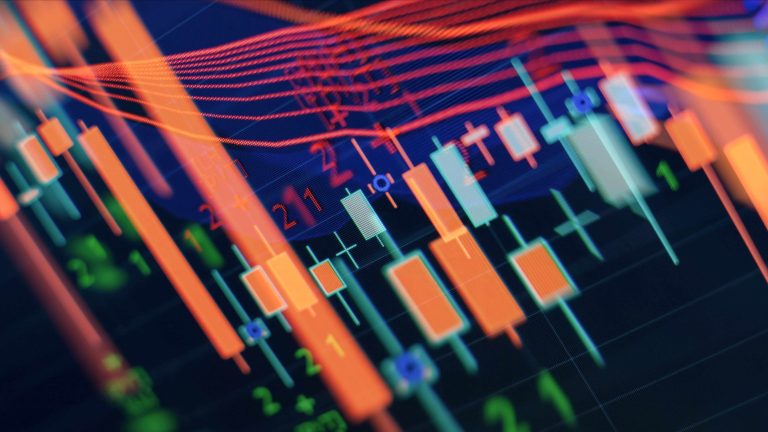Moving averages are one of the most trusted and widely used tools in the world of technical analysis, especially in the fast-paced and often volatile realm of crypto trading. Moving averages in crypto can help traders smooth out price data, identify trends, and make informed decisions by providing a clearer view of market movements. Whether you’re new to crypto trading or a seasoned investor, understanding how to use moving averages in crypto can significantly enhance your trading strategy. This article explores what moving averages are, how they work, and why they are such a valuable tool for crypto traders.
What Are Moving Averages in Crypto?
A moving average is a statistical calculation that takes the average of a certain number of data points over a specific period of time. In trading, this usually refers to the average price of a cryptocurrency over a set number of days. By averaging the data, moving averages help to filter out the “noise” of daily price movements, giving traders a clearer view of the underlying trend.
There are many types of moving averages. The two most common ones are:
- Simple Moving Average (SMA): This represents the most basic form of moving average. Calculated by adding the prices for a certain period, and then dividing the total by the number. For example, a 10-day SMA is calculated by adding up the closing prices of the last 10 days and dividing by 10.
- Exponential Moving Average (EMA): The EMA is similar to the SMA, but it gives more weight to recent prices. This makes it more responsive to recent market changes. The EMA is often preferred by traders who want to react more quickly to price movements.
Using Moving Averages in Crypto Trading
Moving averages can be used in several ways to help traders make better decisions. Here are some common strategies:
Identifying Trends:
Moving averages are used to determine the direction of a trend. When the price of a cryptocurrency is above its moving average, it indicates an uptrend, while a price below the moving average suggests a downtrend. By observing where the price is in relation to the moving average, traders can gain insights into the market’s overall direction.
Crossovers:
A popular trading strategy involves looking for crossovers between different moving averages. For example, a “golden cross” occurs when a short-term moving average crosses above a long-term moving average, signaling a potential bullish trend. Conversely, a “death cross” happens when a short-term moving average crosses below a long-term moving average, indicating a potential bearish trend. These crossovers can serve as buy or sell signals, helping traders to time their entries and exits.
Support and Resistance Levels:
Moving averages can be used as dynamic support levels and resistance levels. In an uptrend, a moving average may serve as a support level, where the price tends to bounce back after touching the average. In a downtrend, the moving average may act as a resistance level, where the price struggles to rise above. Traders often use these levels to set their stop-loss orders or to identify potential entry points.
Smoothing Volatility:
Cryptocurrencies are known for their high volatility, which can make it difficult to discern the market’s true direction. Moving averages help to smooth out this volatility, providing a clearer picture of the market trend. This can be especially helpful in avoiding false signals caused by short-term price spikes.
Combining with Other Indicators:
While moving averages are powerful on their own, they are often used in combination with other technical indicators to confirm signals and increase trading accuracy. For instance, traders might use moving averages alongside the Relative Strength Index (RSI) to identify overbought or oversold conditions, or with the Moving Average Convergence Divergence (MACD) to spot changes in momentum.
Choosing the Right Moving Average
The effectiveness of a moving average depends on the time period you choose. Shorter moving averages, such as the 10-day or 20-day SMA, are more sensitive to price changes and are useful for short-term trading. Longer moving averages, like the 50-day or 200-day SMA, are less responsive but provide a better view of the overall trend and are often used by long-term traders. The choice between an SMA and an EMA also depends on your trading style. If you prefer a more reactive indicator, the EMA might be more suitable. However, if you value simplicity and are less concerned with short-term fluctuations, the SMA could be a better fit.
Conclusion
Moving averages are a fundamental tool in the crypto trader’s arsenal, offering a reliable way to identify trends, gauge market direction, and make more informed trading decisions. Whether you’re a short-term trader looking for quick opportunities or a long-term investor seeking to understand broader market trends, moving averages can help you navigate the complexities of the cryptocurrency market with greater ease and confidence. By understanding how to use moving averages effectively, and by combining them with other indicators, you can enhance your trading strategy and improve your chances of success in the fast-paced world of crypto trading.
Follow Our Official Social Channels:
